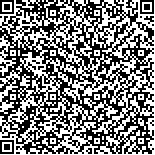| 摘要: |
| 于2015年和2016年对三亚大东海砂质潮间带进行了季节性的调查,对小型底栖生物及其所处的沉积环境进行了研究,探讨了小型底栖生物的丰度、生物量和群落的时空变化及其与环境变量的关系。共鉴定小型底栖生物类群11个,优势类群为海洋线虫类与桡足类(二者占总丰度83.13%);小型底栖生物年平均丰度为(595.77±442.72)ind·10cm-2,小型底栖生物2015年12月的平均丰度为(768.70±533.22)ind·10cm-2,2016年6月平均丰度为(422.85±236.42)ind·10cm-2。丰度分布呈现明显的季节和潮区差异。相关分析结果表明pH、偏态系数与小型底栖生物的丰度呈极显著的负相关,分选系数、中值粒径与之呈极显著的正相关性。小型底栖生物的丰度随季节变化趋势为冬季>夏季。食物丰度、溶氧量升高与沉积物粒径的变化是冬季桡足类丰度的大幅增加的主要原因。TWO-WAY ANOVA与ANOSIM结果显示,潮带对小型底栖生物丰度和群落结构的影响在冬季显著。SIMPER分析结果显示,此差异主要来源为桡足类和线虫类。BIOENV分析结果显示,溶氧量和分选系数的组合最能解释这种差异。这一结果可能是由于高、中潮带的人为干扰与砂滩的清理作用导致。夏季潮带间丰度与群落结构差异不显著,pH、盐度、叶绿素含量是影响其分布的主要原因。研究结果可为砂质滩小型底栖生物的研究提供基础数据,也可为全球气候变化背景下砂质潮间带的保护、开发和利用提供科学依据。 |
| 关键词: 小型底栖生物 时空分布 丰度 群落结构 大东海 三亚 |
| DOI:10.11759/hykx20190119001 |
| 分类号:Q178.531 |
| 基金项目:国家自然科学基金项目(41576153;41976100) |
|
| The spatio-temporal distribution of meiofauna in Dadonghai beach (Sanya, China) and its influcing factors |
|
LUO Tian, LIANG Chen-zi, SUN Yan, YANG Li-li, LI Ya-nan, ZANG Yu, MU Fang-hong
|
|
College of Marine Life Sciences, Ocean University of China, Qingdao 266003, China
|
| Abstract: |
| A seasonal survey of intertidal meiofauna and its sedimentary environment in the sandy beach of Dadonghai, Sanya was conducted in 2015 and 2016. The spatio-temporal distribution of meiofaunal abundance, biomass and the community structure were investigated, and the influencing environmental factors were analyzed. Total 11 meiofauna groups were identified. The most dominant groups were nematodes and copepods, accounting for 83.13% of the total abundance. The average meiofaunal abundance was (595.77±442.72) ind·10 cm-2. The average meiofaunal abundance in December 2015 was (768.70±533.22) ind 10 cm-2, and that in June 2016 was (422.85±236.42) ind 10 cm-2. The meiofaunal abundance varied spatially and temporally. pH and skew coefficient (SKΦ) are negatively correlated with meiofaunal abundance, whereas sorting coefficient (QDΦ) and median grain size (MDΦ) are positively correlated with meiofaunal abundance. The meiofaunal abundance tends to be greater in winter than in summer. Food, dissolved oxygen, and sediment particle size were the main reasons for the increase of copepods in winter. According to two-way ANOVA and ANOSIM, the abundance and community structure of meiofauna reflected a significant difference among different tides in winter. According to SIMPER analysis, this difference can be mostly attributed to nematodes and copepods. According to BIOENV analysis, the combination of dissolved oxygen and QDΦ could best explain the situation, which could result in human interference and mechanical cleaning that occurs in high and middle tides. In summer, no significant difference among different tides can be observed. The combination of pH, Chl α and organic matter content could best explain the meiofauna distribution in summer. The results can provide basic data for further research on interstitial meiofauna, together with scientific basis for the protection, exploitation, and utilization of sandy intertidal zones under the background of global climate change. |
| Key words: meiofauna spatio-temporal distribution abundance community structure Dadonghai Beach Sanya |
